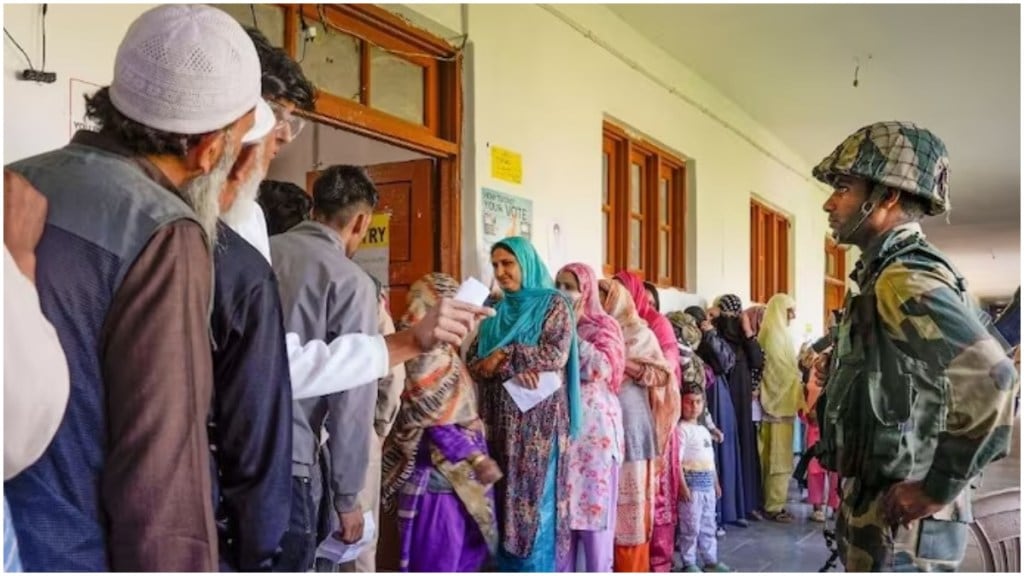Satta Bazaar Jammu Kashmir: As the third phase of the Jammu and Kashmir Assembly Elections approaches, the air is thick with anticipation, and the betting market is ablaze with excitement. With 90 assembly seats up for grabs, speculation about who will emerge victorious has already begun. Although the final results will be unveiled on October 8th, bettors are placing their wagers based on predictions and insights about the political landscape. From Falodi and Dabwali to the bustling markets of Mumbai, the question on everyone’s lips is whether the BJP will maintain its momentum or if the Congress will stage a comeback. The National Conference and the People’s Democratic Party (PDP) are also drawing significant attention, suggesting a thrilling electoral showdown ahead. For the BJP, the challenge lies in securing Muslim votes, a crucial demographic in this complex political arena.
Elections in J&K after a decade
The last Assembly elections in Jammu and Kashmir took place in 2014, resulting in a coalition government formed by the PDP and the BJP. This partnership was seen as unusual by many analysts due to the stark ideological differences between the two parties. However, the coalition quickly revealed its instability and ultimately collapsed in 2018 when the BJP withdrew support from Mehbooba Mufti’s administration. Following this, the state fell under governor’s rule. In 2019, the Narendra Modi government revoked Jammu and Kashmir’s special status, effectively nullifying Articles 370 and 35A on August 5. This action stripped the region of its long-held autonomy, a significant move for the BJP, which has long advocated for such changes as part of its core beliefs. Additionally, the state was reorganized into two Union Territories: Jammu and Kashmir, and Ladakh, under the Reorganisation Act of 2019, which came into effect on October 31 of that year. Importantly, the Union Territory of Jammu and Kashmir was established with its own legislative assembly, making the ongoing 2024 Assembly elections the first of their kind for this region.
These Assembly elections could mark a pivotal moment for the political landscape of Jammu and Kashmir. Three critical issues are likely to shape the future of politics in the region: the authority of the Lieutenant Governor in the new administrative framework, the unresolved question of statehood, and the involvement of former separatists and pro-Pakistan factions in the current electoral process.
The Election Commission revealed the election schedule for the Jammu and Kashmir Assembly on August 15. After a ten-year gap, elections were held in three phases – Phase 1 on September 18, Phase 2 on September 25, and now Phase 3 which will be held on October 1.
Jammu and Kashmir 2014 Election Results
In the 2014 Assembly elections, the People’s Democratic Party (PDP) secured 28 seats, while the Bharatiya Janata Party (BJP) won 25 seats, the National Conference (NC) captured 15, and the Congress obtained 12 seats. The resulting hung assembly prompted the PDP and BJP to form a coalition government, but this partnership was dissolved by the BJP in June 2018.
BJP’s hold in Jammu and Kashmir
In the 2014 Assembly elections, the BJP made history by winning 25 out of 37 seats in the Jammu region, and now the party is determined to either replicate or surpass that success in the Jammu and Kashmir Assembly polls, the first in a decade. Leveraging Modi’s popularity once again, the BJP is also hopeful for support from the Kashmir Valley. On the ground, issues such as rising prices and unemployment resonate with voters, and some express concerns over the perceived underperformance of former BJP MLAs, as reported by The Indian Express. However, party leaders assert that the situation is steadily shifting in their favor as each day passes.
In 2014, Article 370 had not yet been revoked, and terrorism had not been effectively addressed. It remains to be seen how the BJP will fare in Kashmir. Historically, the region has posed challenges for the party, though it has shown considerable strength in Jammu.
National Conference and Congress
Ahead of the assembly elections, the alliance between the National Conference and Congress fortified its position in the Kashmir Valley. Observers were keen to see how these parties manage seat-sharing arrangements and capitalize on their influence. The National Conference, for now, maintains a robust presence in Kathua, Doda, and Rajouri, while Congress continues to hold sway in Jammu.
PDP’s traditional domination
The PDP has traditionally dominated in regions affected by terrorism, such as Shopian, Anantnag, Kulgam, Tral, and Budgam, consistently performing well in elections. However, the party faced challenges in the 2024 Lok Sabha elections. This time, Mehbooba Mufti’s daughter, Iltija, is contesting, along with several younger candidates who have been nominated, potentially shifting the party’s fortunes.
After recent delimitation, Jammu and Kashmir now has a total of 114 assembly seats, but elections are being held only for 90 of these constituencies. This is due to 24 seats being located in Pakistan-occupied Kashmir, which will not participate in the elections. The Delimitation Commission, formed in March 2020 after the abrogation of Article 370, reorganized the seats, increasing the assembly count from 107 to 114. Six seats were added in Jammu and one in Kashmir, while the 24 seats from Pakistan-occupied Kashmir remained unchanged. Thus, compared to the 83 seats contested in 2014, this time elections will take place for 90 seats.
In conclusion, the political landscape is intricate and ever-changing in Jammu and Kashmir. The fervor in the betting market underscores the heightened interest in the elections, with political analysts and citizens alike closely monitoring the developments.

